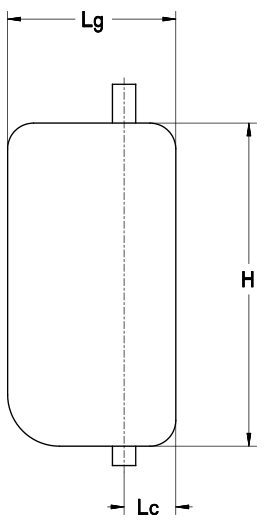For boats fitted with a rudder with speed not exceeding 25 knots, the torque of the rudder or rudders is calculated according to following formula and corrections.
It must be known that the torque necessary to manoeuvre a boat depends on:
- The speed of the water flowing on the surface of the rudder at a certain angle
- The rudder size
- The total sweep of the rudder (and part of the boat), if the rudder stock is not perpendicular
- The compensating surface of the rudder
Torque Calculation Formula for Speed below 25 Knots
C = S x [ (0.4 Lg) – Lc ] x V² x K
C = Torque in kpm schema_safran
S = Total surface of rudder (H x Lg) in sq. m
H = Height of rudder in m
Lg = Width of rudder in m
Lc = Compensation width in m
V = Maximum speed of the boat in knots
K = Coefficient according to total angle of rudder
| Port to starboard | 70° | K = 15.89 |
| Port to starboard | 80° | K = 17.80 |
| Port to starboard | 90° | K = 19.52 |

| Corrections in function of the type of boat: | |
|---|---|
| For sailing-boats | C x 0.5 |
| For a boat with a steering nozzle | C x 2.0 |
| For twin engine power boats with 1 rudder | C x 0.5 |
| For boats fitted with several rudders (catamarans, trimarans, monohulls) | Multiply the calculated torque result by the number of rudders fitted on the boat |
Once the torque is known, the appropriate cylinder is selected and one or two manual pumps will be added.
Note: If the selected pump has a higher flow rate in order to reduce the number of turns lock to lock, it will be necessary to use a steering wheel with the maximum recommended diameter.
For pleasure boats with planing or semi-planing hulls and speed exceeding 25 knots, the cylinder may be selected by using the chart below:
| Length of Hull | Cylinder Type – 1 Rudder | Cylinder Type – 2 Rudders |
|---|---|---|
| 8 metres | VHM 40 DTP | VHM 32 DTP |
| 10 metres | VHM 40-254 | VHM 40 DTP |
| 12 metres | VHM 40-254 | VHM 40 DTP |
| 14 metres | VHM 50 DTP | VHM 40-254 |
